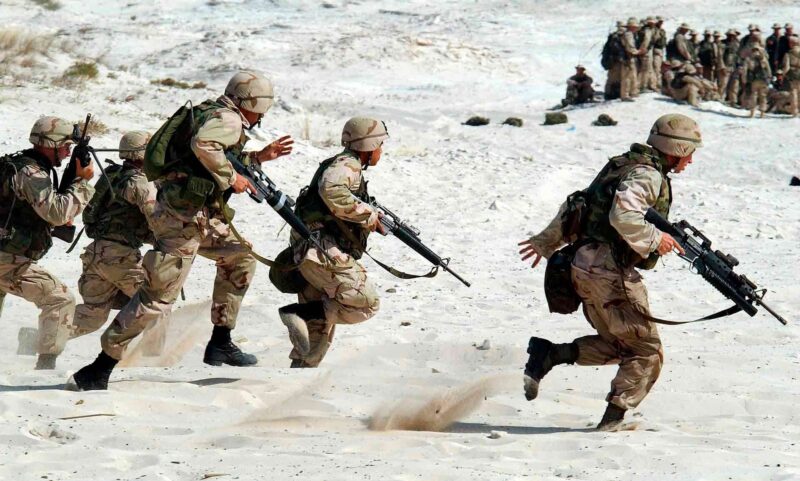Understanding the composition of the United States military leadership involves recognizing the critical roles played by its highest-ranking officers, the generals. The US Military is structured into several branches, including the Army, Navy, Marine Corps, Air Force, and Space Force. Each branch has a specific hierarchy of officer ranks, and at the top of this structure are the general officers.
As of a recent overview provided by The Soldiers Project, there are 653 generals serving across these branches, though this number is known to fluctuate based on military needs, retirements, and congressional limits.
General officers hold ranks from one-star brigadier generals to four-star generals in the Army, Air Force, and Marine Corps, while the Navy equivalents are rear admirals lower half to full admirals. These officers possess substantial responsibilities which include leading large units, making strategic decisions, and overseeing military operations. They also represent the military’s highest level of command and have considerable influence over military policy and national defense.
Key Takeaways
- The US military is composed of various branches, all with general officers at the pinnacle of their leadership hierarchies.
- Generals are charged with the strategic leadership and operational control of military branches.
- The current number of active-duty general or flag officers is 218 for the Army, 149 for the Navy, 170 for the Air Force, 62 for the Marine Corps, and 21 for the Space Force.
Overview of the US Military Structure

The United States military is a complex organization structured to provide national defense across various domains—land, sea, air, and space. It consists of five main service branches: the Army, Navy, Air Force, Marine Corps, and the recently established Space Force. Each branch serves a specific operational role but works in conjunction under the coordinated oversight of the Department of Defense (DoD).
The Army is the oldest and largest branch, responsible for ground-based military operations. It is complemented by the Navy, which handles warfare at sea and has the unique ability to project power across the oceans. The Marine Corps, often working closely with the Navy, specializes in amphibious operations and rapid response. The Air Force focuses on air superiority, space operations, and strategic deterrence, while the Space Force, as the newest branch, is tasked with organizing, training, and equipping space forces.
Organizationally, these branches fall under the jurisdiction of the Department of Defense, headed by the Secretary of Defense and further subdivided into various departments and commands. Strategic direction is provided by the Joint Chiefs of Staff, a body of senior military leaders advising the President and the Secretary of Defense.
Each service branch also maintains its own civilian-led executive department, ensuring civilian control over military operations. Together, they form an integrated and adaptive military structure capable of responding to a spectrum of global challenges.
General Officers and Their Ranks
In the United States military, general officers are recognized by their insignia, which comprise a set of stars ranging from one to four, denoting ranks from brigadier general to full general.
Insignia and Stars
The insignia of general officers in the U.S. military are distinguished by stars, with one star for a brigadier general and up to four stars for a full general. This system allows for quick visual identification of an officer’s rank across different branches of the service.
There are a total of four general officer ranks, each represented by one to four stars respectively.
Four-Star Generals
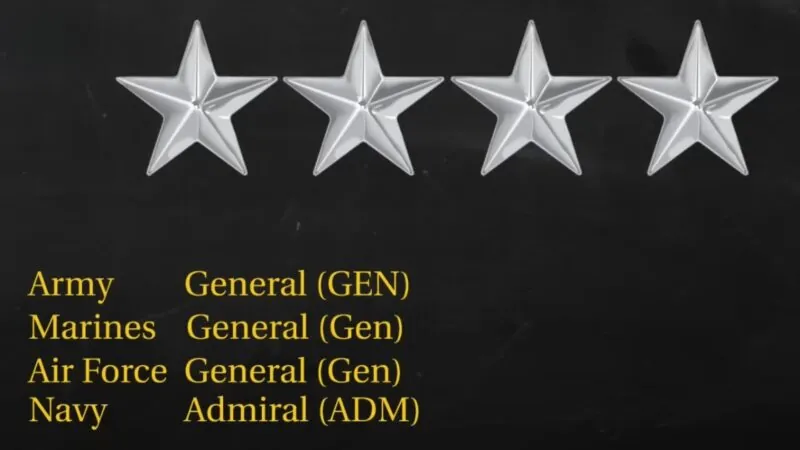
Four-star generals hold the highest rank typically attainable in the U.S. military, signifying their role in positions of significant responsibility across the armed forces.
The exact number of four-star generals is capped by law, with the total number allowed varying based on the needs of the military but generally does not exceed about 40 active-duty officers at any one time across all branches.
Three-Star Lieutenant Generals
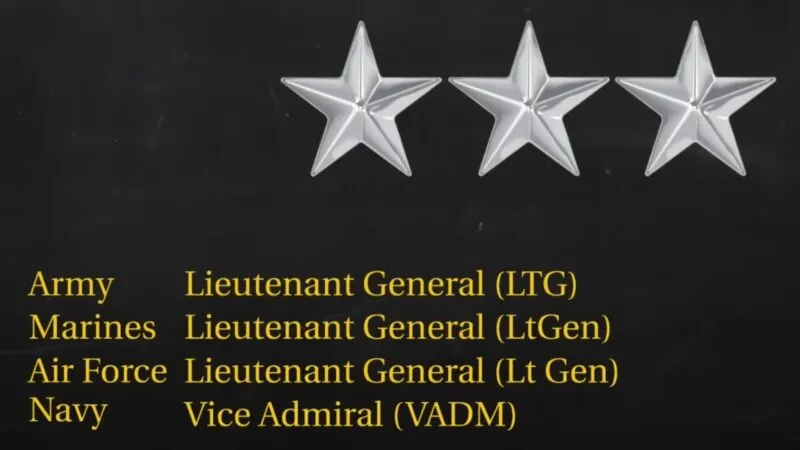
Lieutenant generals, or three-star generals, serve in key leadership positions and are vital to the strategic and operational planning within the military.
There are around 50 to 60 lieutenant generals in active service at any given time, reflecting the structure and demands of the U.S. military.
Two-Star Major Generals
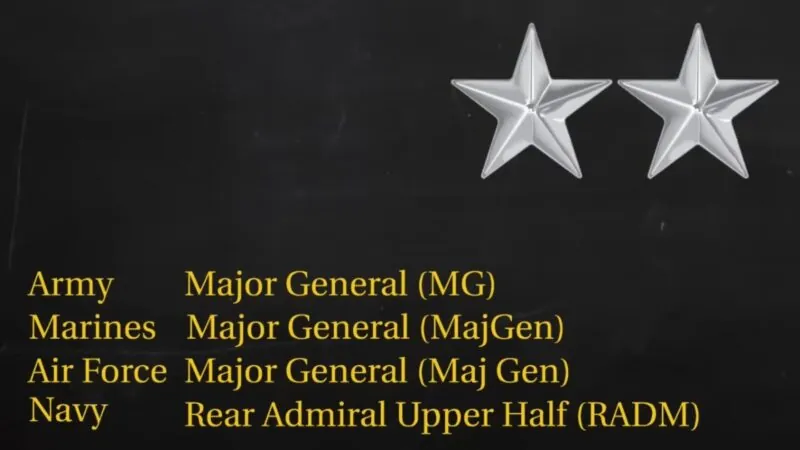
Major generals, bearing two stars, command divisions or fulfill significant staff roles, managing large segments of the military apparatus.
The U.S. military typically has around 100 to 120 major generals in active duty, illustrating the breadth of leadership roles at this level.
One-Star Brigadier Generals
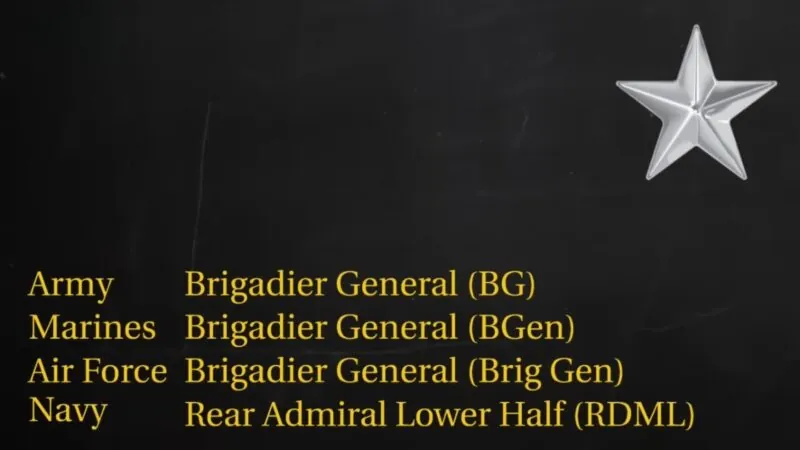
Brigadier generals, who wear a single star, are crucial in executing military strategy at a high level, often commanding brigades or serving in senior staff positions.
The number of brigadier generals in active duty ranges from 140 to 150, ensuring leadership depth across various military functions.
Role and Responsibilities of General Officers
General officers in the United States military hold crucial roles in maintaining the readiness and strategic direction of the armed forces. Their responsibilities span from direct command and leadership to joint operational management and strategic advice for national defense planning.
Command and Leadership
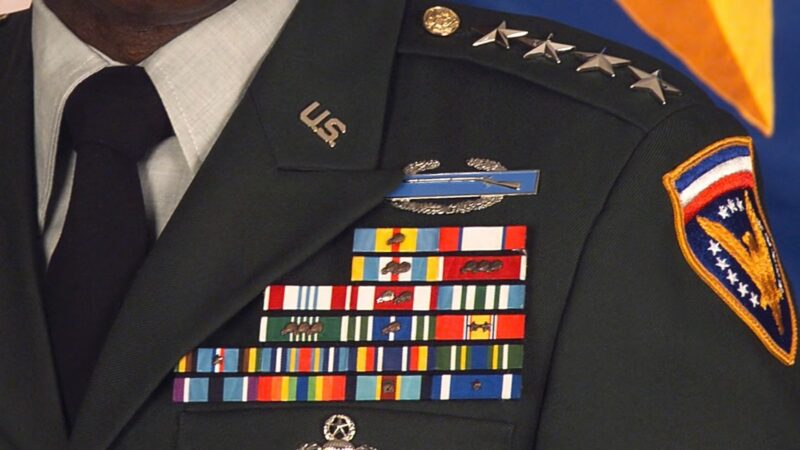
General officers are the pinnacle of military leadership and command. They are responsible for large units and have a broad scope of influence over their service’s operations. These highly ranked officers lead from the front, setting standards for discipline, training, and combat readiness.
Brigadier Generals, Major Generals, Lieutenant Generals, and full Generals typically oversee thousands of personnel and large military installations or divisions, each progressively responsible for larger and more complex formations.
Joint Positions and Combatant Commands
At the joint level, General officers may serve as Combatant Commanders or in senior positions within the Joint Chiefs of Staff. They manage joint military efforts across different branches, ensuring interoperable and coordinated actions in various operational theaters.
The U.S. military’s unified combatant commands, such as U.S. Space Command, Africa Command, Central Command, Cyber Command, Pacific Command, European Command, Northern Command, and Special Operations Command, are each led by a four-star General or Admiral who reports directly to the President and Secretary of Defense.
Strategic Planning and Advice
General officers are instrumental in strategic planning and providing military advice to national leaders. They analyze potential threats, create military strategies to deter or contain conflicts, and ensure the U.S. military remains a dominant force globally.
Generals engage in complex evaluations of geopolitical situations and defense resources, offering expert advice to the President, Secretary of Defense, and National Security Council to shape the nation’s military and security policies.
Path to Becoming a General
The ascent to the rank of general in the United States Military represents the pinnacle of military leadership, beginning with a commission as an officer and culminating in a rigorous selection process for senior command positions.
Commissioning Programs
Individuals may obtain a commission in the United States Army, Air Force, and other branches through several avenues. The United States Military Academy (USMA) at West Point and the Air Force Academy offer rigorous four-year programs culminating in a Bachelor of Science degree and a commission as a second lieutenant. Alternatively, students may enroll in the Reserve Officers’ Training Corps (ROTC) at civilian colleges, leading to a commission upon graduation. There’s also the Officer Candidate School (OCS) that serves college graduates who did not participate in ROTC or attend a military academy.
Promotion and Advancement
The trajectory from officer to general is marked by successive promotions, typically beginning as a second lieutenant. Officers are evaluated on their leadership abilities, job performance, and potential to handle greater responsibilities.
Promotion to general officer ranks— brigadier general, major general, lieutenant general, and general—requires a demonstrated record of exceptional service, leadership, and the endorsement of senior military leadership. Each promotion brings increased responsibility and typically involves a selection board process.
Senior Leadership Selection
To reach the general officer ranks in the United States military, officers must distinguish themselves markedly from their peers. The selection for one-star general and above is a highly competitive process, influenced by an officer’s service record, leadership performance, education, and professional military education.
These selections are often approved at the highest levels, including the Department of Defense and the President of the United States. Advancement to four-star general requires nomination by the President and confirmation by the Senate. The roles and responsibilities of general officers vary significantly across different services and commands within the Army and the Air Force.
Roles of Specific Generals in History
The United States Army has had many generals who played pivotal roles in shaping world history through their military leadership and strategic acumen. During World War II, General Dwight D. Eisenhower served as Supreme Commander of the Allied Expeditionary Force in Western Europe, orchestrating the successful D-Day invasion and subsequently the defeat of Nazi Germany.
Another significant figure was General George C. Marshall, who, as Army Chief of Staff during World War II, oversaw the U.S. Army’s expansion from a modest force to one of the most powerful in history. He later served as Secretary of State, crafting the Marshall Plan which helped to rebuild Europe after the war.
Moving towards a more contemporary context, General Lloyd J. Austin’s pioneering leadership merits mention. He was the first African American to command an American combat brigade in Iraq, and later, the United States Central Command. Austin’s strategies were influential in the fight against the Islamic State.
| General | Combat Role | Notable Achievement |
| Dwight D. Eisenhower | Supreme Commander, Europe | Led D-Day, defeated Nazi Germany |
| George C. Marshall | Army Chief of Staff | Expanded U.S. Army during WWII |
| Vincent K. Brooks | Commander, U.S. Army Pacific | Managed military relations with China |
| Lloyd J. Austin | Commander of U.S. Central Command | First African American combat brigade commander in Iraq, opposed Islamic State |
General Vincent K. Brooks, as the Commander of the U.S. Army Pacific, had a significant role in managing military relations with China, ensuring regional security through diplomatic and military channels.
Generals of the United States Army have been essential in executing wartime strategies and maintaining global peace and security. Their roles often transcended beyond mere combat, impacting diplomatic and geopolitical landscapes worldwide.
General Officer Demographics
Understanding the demographics of general officers within the United States military provides insight into the structure and hierarchy of its leadership. It reflects the balance between experience, authority, and strategic oversight provided by senior military leaders.
Total Number of Generals
As of the estimated data by the end of the fiscal year of 2024, the United States Army is expected to have 15 Generals. This represents the highest tier of officers in the Army. In a broader context, approximately 900 active-duty general/flag officers (GO/FOs) serve across all branches of the military, including the Army National Guard and the Air National Guard, which fall under the National Guard Bureau. The proportion of general officers can be used to assess the leadership structure in relation to the total military personnel.
Active Duty and Reserve Components
Within the active duty forces, there is a certain ratio of general officers to enlisted members and officers, maintaining military efficacy and command. For example, historically there’s been about one general officer for every 1,400 troops.
Contrastingly, during expansive conflicts such as World War II, that ratio was significantly different. The Reserve components, including the Army National Guard and the reserves, also appoint general officers. These officers fulfill critical roles in ensuring the readiness and operational capability of troops, with the National Guard Bureau overseeing national-level coordination.
The number of general officers in the reserve components contributes to a comprehensive total force structure, ensuring the military can execute its duties across all levels of service.
Retirement and Post-Military Careers
Upon retiring from the military, many generals transition to new career paths, leveraging their leadership experience and extensive networks. Retirement from military service often comes with a transition period where these leaders must navigate their entry into civilian roles.
Career Paths
- Private Sector: A significant number find opportunities within the defense industry. Many retired four-star officers take on roles as board members or advisers to various defense contractors.
- Federal Employment: Some generals pursue federal civil service positions, which allow them to continue contributing to government operations outside of uniformed service.
Statistics
- Employment After Service: While definitive numbers vary, reports indicate a pattern of military leaders joining the defense industry. For example, a Government Accountability Office report noted that over 1,700 military and government officials transitioned to the defense sector over a five-year period.
Military and Defense Budget
The United States allocates a substantial portion of its federal budget to defense, which encompasses salaries, operational costs, and other expenditures related to the military force. Decision-making on budget allocation is influenced by various factors, including the number and rank of personnel.
Generals’ Impact on Budget Planning
Generals play a crucial role in budget planning within the Department of Defense (DoD). They are responsible for shaping military strategies that determine the operational and capital requirements of the military force. As such, the number of generals and their involvement can significantly affect fiscal decisions. High-ranking officers have a hand in prioritizing and endorsing programs that contribute to strategic defense capabilities, including those managed by the Defense Health Agency and the Defense Intelligence Agency.
Pay Grades and Allowances
The pay grade of military personnel, including generals, is an integral part of the defense budget. Generals are at the top of the military pay scale, receiving salaries in accordance with their rank and years of service. In addition to the base pay, they are eligible for various allowances and benefits, which can include housing, healthcare, and retirement plans. These compensations are part of the overall budget managed by the Department of Defense and are factored into the annual financial planning for the military.
Funding for these expenses comes from the overall defense budget, which includes both the base defense budget and supplemental war funding. The Defense Health Agency, for instance, is responsible for the administration of healthcare benefits to service members, which is a significant line item in the overall budget. Pay grades and associated allowances are categorized and standardized across the military branches to ensure uniformity and equity in compensation.
Legislative and Civilian Oversight

The governance of the United States military is firmly rooted in the principles of civilian oversight. This is achieved through both legislative action and executive management, ensuring that military leadership does not function autonomously but under the scrutiny and direction of civilian authorities.
Senate Armed Services Committee
The Senate Armed Services Committee plays a critical role in overseeing the U.S. military, including its general officers. This committee is responsible for holding hearings that review and evaluate military activities and policy, and it also considers nominations of the President for positions such as Secretary of Defense and the Joint Chiefs of Staff. Detailed discussions and testimonies can focus on the appropriateness of the number of generals based on current defense strategies and global commitments.
National Defense Authorization Act
The National Defense Authorization Act (NDAA) is a key piece of legislation that specifies the budget and expenditures of the Department of Defense. One of its purposes is to regulate the size and structure of the military, which may include a stipulation on the number of generals. For example, the 2017 NDAA included a provision to reduce the number of generals, aiming to streamline military efficiency and adapt to modern needs.
Role of the President
The President of the United States, as Commander-in-Chief, wields direct authority over the military but works within the constraints of policies and laws enacted by Congress. The President’s influence extends to appointing the most senior military leaders, upon the advice and consent of the Senate, thereby influencing military practices and the culture of leadership. Civilian control is further maintained by the President’s ability to set broader defense-related policies that shape military operations and strategy.
Current and Future Challenges for Military Leaders

- Recruitment and Retention: Military commanders face the significant task of meeting recruitment goals in a competitive environment. Recent trends indicate challenges such as the Army missing its fiscal target by a considerable number of enlistees. This shortfall necessitates innovative approaches to attract and retain talent across all branches, including the U.S. Marine Corps and the U.S. Coast Guard.
- Cybersecurity Threats: As adversaries advance their capabilities, leaders must prioritize protecting the military’s cyber infrastructure. Cybersecurity is no longer a secondary concern but a primary operational field that demands constant vigilance and advancement.
- Interagency Coordination: Collaboration with various entities like the United Nations Command and U.S. Forces Korea is crucial for strategic planning and execution of international operations. Military departments must navigate a complex web of alliances while maintaining a clear strategic vision.
- Innovative Medical Solutions: The recent Operation Warp Speed initiative underscores the military’s role in supporting rapid therapeutic developments. Military leaders are tasked with ensuring that medical innovations are effectively integrated into force health protection strategies.
- Technological Advancements: Adopting cutting-edge technologies remains a central challenge for military leaders. Modern warfare’s evolving landscape requires continuous adaptation, from unmanned systems to artificial intelligence applications.
- Climate Change: Military leaders must also plan for the impact of climate change on global security and military operations, considering both immediate and long-term strategies for adaptation and mitigation.
Frequently Asked Questions
This section addresses some of the most common inquiries about the ranks and numbers of generals in the U.S. Military, providing specific information on their structure and hierarchy.
What are the different ranks of generals in the U.S. Military?
In the U.S. Military, the general officer ranks are categorized loosely from one-star to four-star: Brigadier General (one-star), Major General (two-star), Lieutenant General (three-star), and General (four-star). The U.S. Army, Air Force, and Marine Corps use this ranking structure, whereas the Navy equivalent would be Rear Admiral lower half to Admiral.
How many officers attain the rank of 5-star general?
The five-star rank, formally known as General of the Army or Fleet Admiral, is a special wartime designation with only nine individuals ever promoted to this level in U.S. history. No officers currently hold this rank as it was last awarded in the mid-20th century, following World War II.
What is the total number of active 4-star generals currently serving?
The exact number of active four-star generals fluctuates based on retirements and new appointments. As of the last publicly available information, there are generally around 40 to 44 active four-star officers across all military branches.
Who holds the highest command position in the U.S. Military?
The highest military command position in the U.S. Military is the Chairman of the Joint Chiefs of Staff. This position is held by a four-star general or admiral who serves as the principal military advisor to the President, the Secretary of Defense, and the National Security Council.
How does the number of 1-star and 2-star generals compare in the U.S. Army?
In the U.S. Army, there tends to be a larger number of one-star and two-star generals compared to their three-star and four-star counterparts. For instance, there are over a hundred in each rank of one-star and two-star generals, with precise numbers varying due to changes in military structure and retirements.
Has there ever been a 6-star general, and if so, who was it?
The rank of a six-star general has never been authorized or used in the U.S. Military. However, it’s worth noting that General George Washington was posthumously awarded the title of General of the Armies of the United States, which is often informally mentioned as equivalent to a six-star rank to honor his leadership during the Revolutionary War.
Summary
The United States military’s structure is defined by a complex hierarchy of leadership, with general officers serving at the pinnacle of command across its various branches. These officers, ranging from one-star brigadier generals to four-star generals, play critical roles in shaping military strategy, operational management, and national defense policies.
With a current total of 653 generals, their responsibilities encompass leading large units, making strategic decisions, and overseeing military operations.

